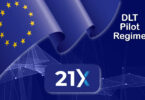Frequently drugs are returned to pharmaceutical manufacturers, and instead of destroying them they re-sell them. While the proportion of drugs may be small at 2-3% of sales, the value exceeds $6 billion a year. Wholesalers may order too much and hence return the unsold stock. SAP is working with a group of manufacturers on a blockchain project to verify the returns are original products.
The global counterfeit market could be as big as $200bn a year according to Reuters. In third world countries, the proportion of counterfeit drugs is very high. But even in the developed world, you could buy life-saving medicine from your local pharmacy which was previously returned. If the manufacturer didn’t adequately verify the return, your drugs could be fake.
Legislation
Both the EU and the US have introduced legislation to deal with the issue.
Europe enacted the Falsified Medicine Directive (FMD), which comes into force in most EU countries in February 2019. Drugs have to be serialized or barcoded. The EU adopted a centralized approach, so manufacturers upload serial numbers to the regulator’s database. That way suppliers can connect to the same database and verify the data.
In the US the 2013 Drug Supply Chain Security Act (DSCSA) is being phased in over a period of ten years. By late November this year manufacturers have to implement serialization or barcoding at a package level. And by the same time next year these serial numbers have to be used to verify returns.
But there’s no centralized regulator database in the US.
Blockchain comes to the rescue
Without a centralized database, one option would be for every distributor to integrate data with every pharmaceutical manufacturer. That could be painful and significant work.
So it makes sense to have a blockchain as a shared resource where pharmaceutical manufacturers record the serial numbers of their packages. Wholesalers and customers can then connect to the blockchain and verify the product is authentic.
The blockchain is immutable, transparent, and by sharing information avoids multiple complex integrations.
Originally a blockchain prototype was created between Merck, AmerisourceBergen, and SAP. When news spread, other customers approached SAP. A client emailed saying they like the idea, but what about scaling it up? “SAP you have the contacts”. The person at SAP who received the email has worked in client engagements in that sector for 15-20 years. He was able to respond within thirty minutes, and just a week later they had an onsite workshop of 20 people including several clients.
As a result, today there are more than fifteen SAP clients working on the project. These customers include Merck, AmerisourceBergen, GSK, AMGEN, Boehringer Ingelheim, McKesson, and Novo Nordisk.
How it works
SAP has an existing solution unrelated to blockchain called Advanced Track and Trace for Pharmaceuticals (ATTP) which generates the unique identifiers. The pharma blockchain is very simple without complex code. It stores four pieces of information that come from ATTP: the item number (based on GS1 standard), a serial number, a batch number, and an expiration date.
When a manufacturer ships a package he registers the item on the blockchain. So it’s stored in an immutable and transparent way. Other parties can access information from their local copy of the blockchain.
The distributor has a simple scanner app which extracts the four pieces information from the packaging’s barcode. So they can check any returns they receive have a unique identity.
What if a counterfeiter copies some known barcodes?
SAP added the ability to track every time a package changes hands. So you can potentially see when a customer buys some drugs. If the manufacturer receives a returned package with the same id, it’s much easier to detect a problem. Plus there’s a map view which helps to ensure the drugs are in the region you’d expect them to be.
The first Proof of Concept (PoC) was in Q3 2017 and a second one earlier this year. SAP’s now in the process of shaping the solution towards a live product. Hence they’ve on-boarded more customers.
An open solution
Raimond Gross, Chief Blockchain Strategist at SAP, believes in creating an open solution. “At the point in time when those serial numbers are generated and stored, this is a core SAP product, SAP’s Advanced Track and Trace for Pharmaceuticals. But this could be other systems and other players that have different production systems.”
And to encourage decentralization, they’re happy for some of the blockchain nodes not to be in SAP’s cloud. A few of their clients have nodes that are on premises.
Gross believes limiting blockchain participants to SAP customers would “violate the paradigm of this solution.”
Future potential
The intention is to keep the product simple. “We’re talking about four data fields. It’s much easier to agree on than a full complex business application with independent logic on it. This would take much much longer,” said Gross.
The current regulatory pressure relates to the authenticity of returns. But the solution equally applies to the authenticity of the product at the point of first shipping. Consider the case of foreign aid in developing countries. When batches arrive, it would be good to verify that it’s original malaria medicine as opposed to a counterfeit placebo.
While it’s not on the current roadmap, it would be useful to provide a consumer application so patients could verify the authenticity of drugs themselves.
Gross concluded: “Obviously it’s easy to transfer that to any other industry or any other case where identification of objects is essential.”
MultiChain
The solution uses the MultiChain protocol. This is one of the earlier permissioned blockchains and is based on Bitcoin’s technology. However, it does away with the energy-hungry mining process and hence has a better performance compared to public Bitcoin.
Gross outlined three reasons for choosing MultiChain. The first reason was “Bitcoin is the only production grade infrastructure”. Secondly, MultiChain is reasonably easy to use. “There are very complex solutions out there, but complexity brings in uncertainty, and there are a lot of variables that you need to manage,” said Gross.
Ledger Insights has spoken to others including Cedric Edmonds from Solidum who created an insurance Catastrophe Bond blockchain. As a tech-savvy non-developer, Edmonds set up a production MultiChain blockchain himself.
Gross’ third reason was “at the end, it also comes down to people.” MultiChain’s founder Gideon Greenspan is well known in the industry and has an influential blog. “Everything he writes is so spot on. In the way they think about where this is going we are so much aligned, without even talking about alignment,” commented Gross.
Conclusion
There are often complaints that some blockchain projects seem to be a solution looking for a problem. This business case is a genuine problem which has a looming deadline.
There’s a competing pharma supply chain blockchain in the form of MediLedger run by startup Chronicled. Last year they did a PoC including Genentech, AmerisourceBergen, McKesson, and Pfizer.
However, a simple Google search reveals that every one of them is an existing SAP customer.
If you’re interested in learning more about Blockchain and Pharma Supply Chain, Hanson Wade is running a conference in Boston in October. The link includes a 10% ticket discount. We’ve found Hanson Wade events have strong speakers, hardly any sponsor promotional content, and provide excellent networking opportunities.
Ledger Insights is an event Content and Media Partner but this is neither a paid message nor do we earn commission.






